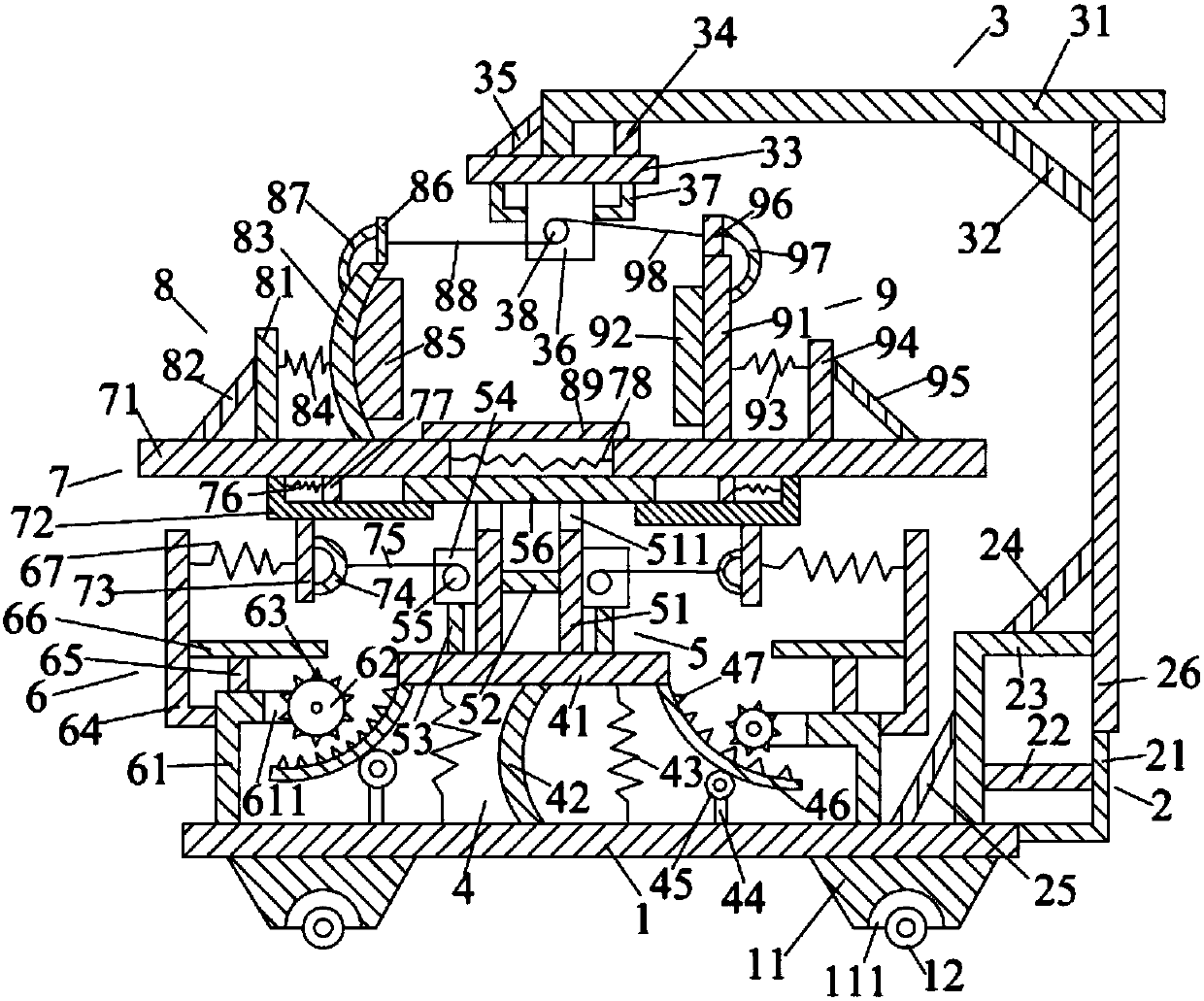A wrapping pressure-applying radial artery compression hemostasis system
A technology of compressing hemostasis and radial artery, which is applied in the field of medical devices, can solve the problems of unsatisfactory use effect, difficulty in controlling the tightness, unsatisfactory hemostasis effect, etc., and achieve the effect of ensuring comfort, significant hemostatic effect, and guaranteed hemostatic effect
- Summary
- Abstract
- Description
- Claims
- Application Information
AI Technical Summary
Problems solved by technology
Method used
Image
Examples
Embodiment Construction
[0009] In the following, a clear and complete description will be made of the wrapping pressure-applying radial artery compression hemostasis system of the present invention with reference to the accompanying drawings.
[0010] Such as figure 1 As shown, the wrapping radial artery compression hemostasis system of the present invention includes a base plate 1, a fixing device 2 located on the right side of the base plate 1, a motor device 3 located at the upper end of the fixing device 2, and a lifting mechanism located above the base plate 1. Device 4, a support device 5 located above the lifting device 4, a driving device 6 located on the left and right sides of the lifting device 4, an adjusting device 7 located above the driving device 6, a second adjusting device located above the adjusting device 7 An extruding device 8 and a second extruding device 9 located on the right side of the first extruding device 8 .
[0011] Such as figure 1 As shown, the bottom plate 1 is re...
PUM
 Login to View More
Login to View More Abstract
Description
Claims
Application Information
 Login to View More
Login to View More - R&D
- Intellectual Property
- Life Sciences
- Materials
- Tech Scout
- Unparalleled Data Quality
- Higher Quality Content
- 60% Fewer Hallucinations
Browse by: Latest US Patents, China's latest patents, Technical Efficacy Thesaurus, Application Domain, Technology Topic, Popular Technical Reports.
© 2025 PatSnap. All rights reserved.Legal|Privacy policy|Modern Slavery Act Transparency Statement|Sitemap|About US| Contact US: help@patsnap.com

